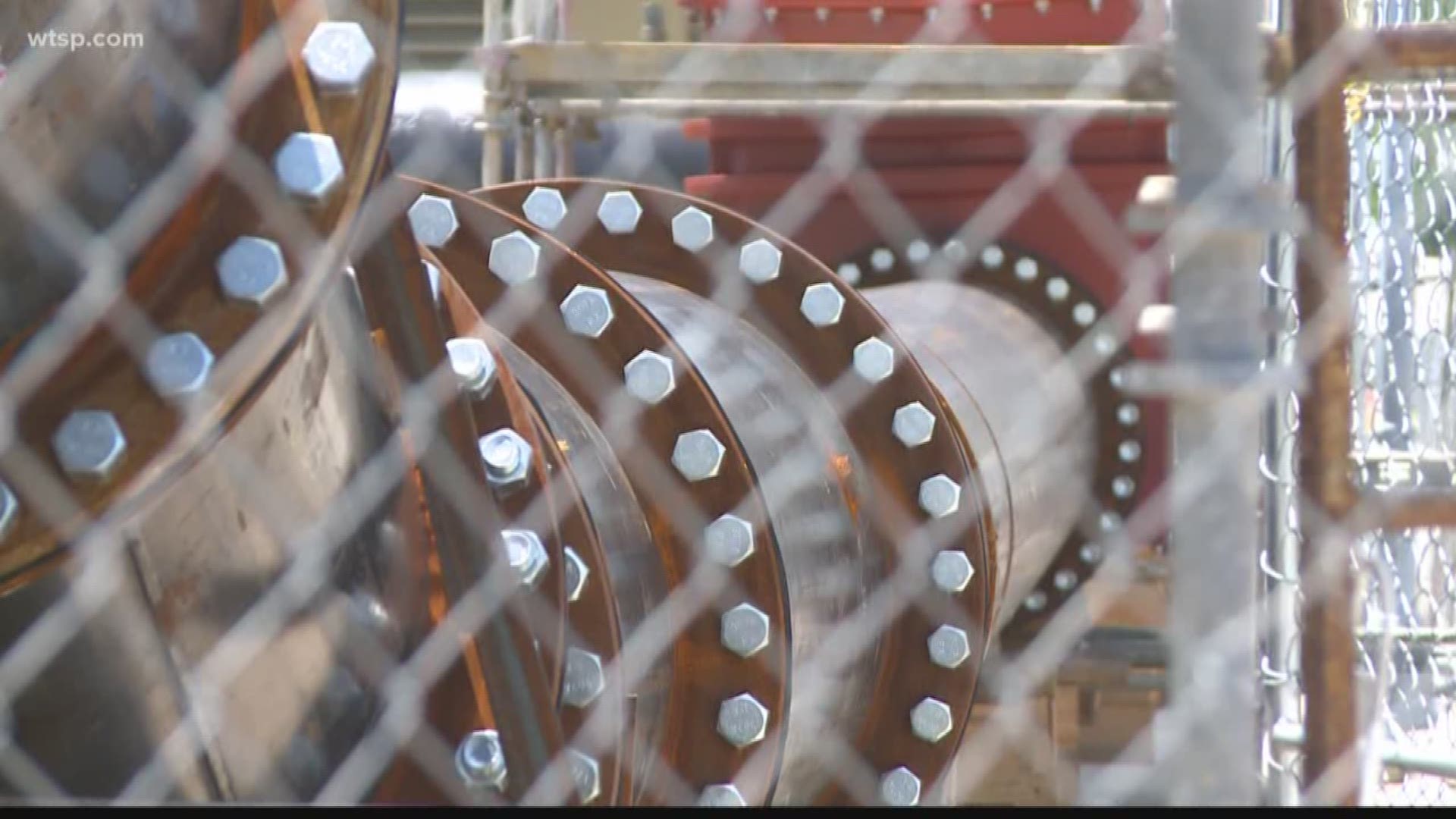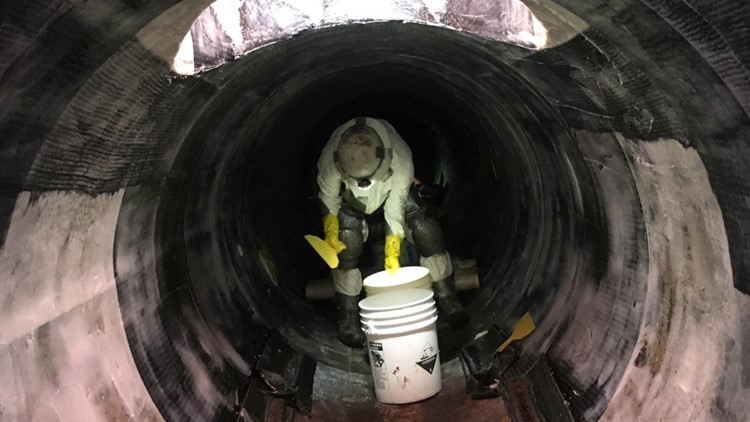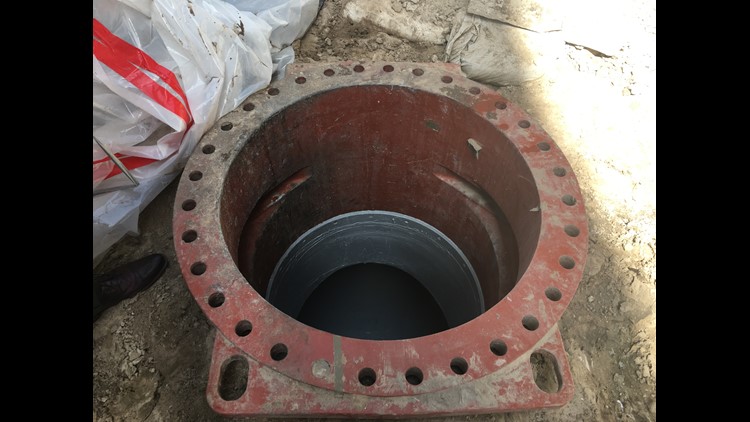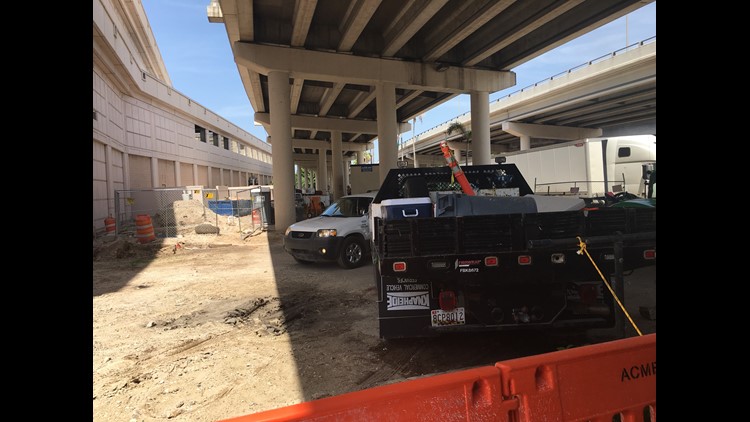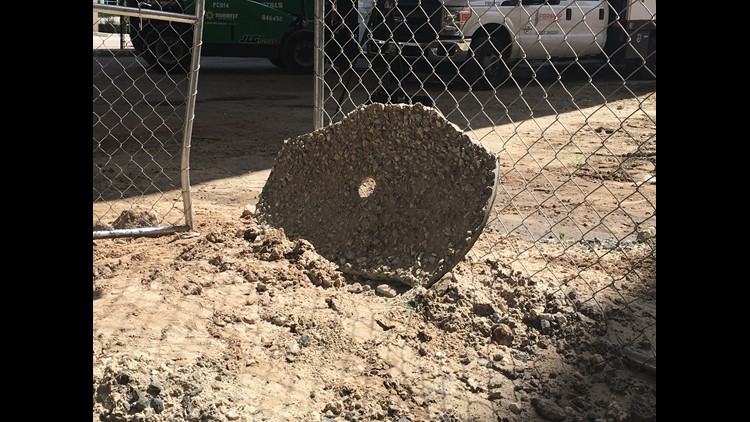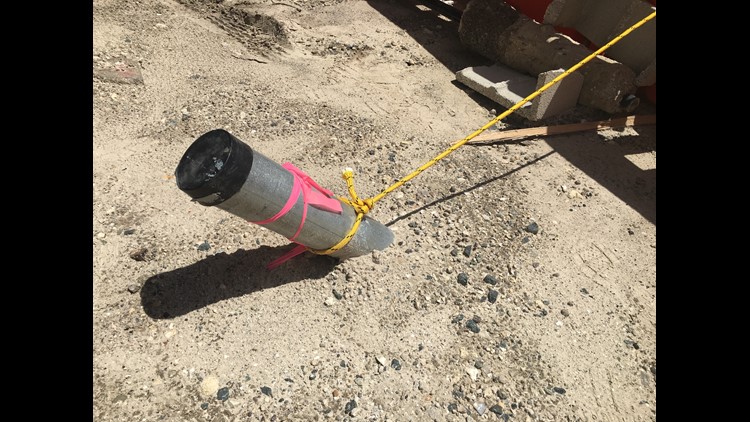TAMPA, Fla. — Imagine if one-third of the city of Tampa’s sewage and wastewater was to suddenly start pouring into the downtown streets and the Hillsborough River.
Tens of millions of gallons a day.
Well, it almost certainly would have happened if city workers had not stumbled upon the problem while making an unrelated repair along the same line.
“We have proactively diverted a major disaster in this case,” said Brad Baird, Tampa’s Public Works Administrator.
Baird and other city workers don’t throw around words like “catastrophic” and "disastrous” too loosely. So, when they do, you know they mean it.
“This is a critical location and the consequences of failure would be large,” said Baird.
For more than 30 years, no one knew it, but nearly 400 feet of concrete pipe, carrying 1/3 of the city of Tampa’s sewage and wastewater to the treatment plant at Port Tampa Bay, was a ticking time bomb.
There was no way to say for certain when, “But at some point, it would’ve failed. And it would’ve been catastrophic at a location like this,” said Baird.
When the 54-inch pipe was first installed back in 1986, engineers didn’t realize there was a slight incline at one point. That created an air pocket that grew over time.
The hydrogen sulfate from the sewage combining with water created sulfuric acid, which ate away at the pipe’s lining for years.
“About half of the pipe was gone. Deteriorated,” said Baird.
Had the pipe burst, it would have buried a huge part of downtown Tampa in 20 million gallons a day of raw sewage.
“That would be a disaster,” said Tampa resident Darvis Santoesteban, passing by the emergency repair project. “That would be a big problem for downtown.”
Not just an economic problem and a traffic problem, but an environmental disaster, say officials.
“Most of that would go to the bay, resulting in fish kills and impacting other aquatic life,” said Baird.
“I mean, it would pollute, block off everything we have down here,” said Stephanie Alarco, who works nearby. “Businesses would be devastated.”
City workers found the problem when they recently went to install an unrelated piece of equipment along the same pipeline.
They immediately declared an emergency and submerged an enormous bypass.
For the next four weeks, workers had to crawl inside the pipe, underground. They re-lined more than 400 feet of pipe with a fiberglass sheeting. It was not a job for the claustrophobic.
“We sent air conditioning down into the pipeline to keep the air fresh,” said Baird. “They actually sat down on the bottom of the pipeline and applied it.”
On Wednesday, engineers plan to remove the bypass and reopen the 54-inch line.
“Now it’s as good as new,” said Baird, expecting the pipe will last another 100 years.
Toby Goodard, who works nearby, said he had had no idea what was going on.
“I hope this helps them doing a better job in the future,” he said. “And discover other issues that there might be elsewhere.”
Officials say it’s just not possible to check every inch of sewage pipe in the city. There are hundreds of miles of pipe. But Baird said they do regularly check some of the oldest sections, and areas that are prone to having issues.
So, how will they ensure that this doesn’t happen again at this same spot in the future?
This time, project engineers installed a pipe which will eventually be hooked up to a release valve. Workers will go around once a month making sure there is no excess air inside the pipeline.
There have been a couple of incidents over the years when a pipeline this size ruptured, but it was quickly contained and not in areas so densely populated.
“The consequences of failure here,” said Baird, “would have been even worse than the ones I’ve seen so far.”
City averts sewer emergency
What other people are reading right now:
►Make it easy to keep up-to-date with more stories like this. Download the 10News app now.
Have a news tip? Email desk@wtsp.com, or visit our Facebook page or Twitter feed.

